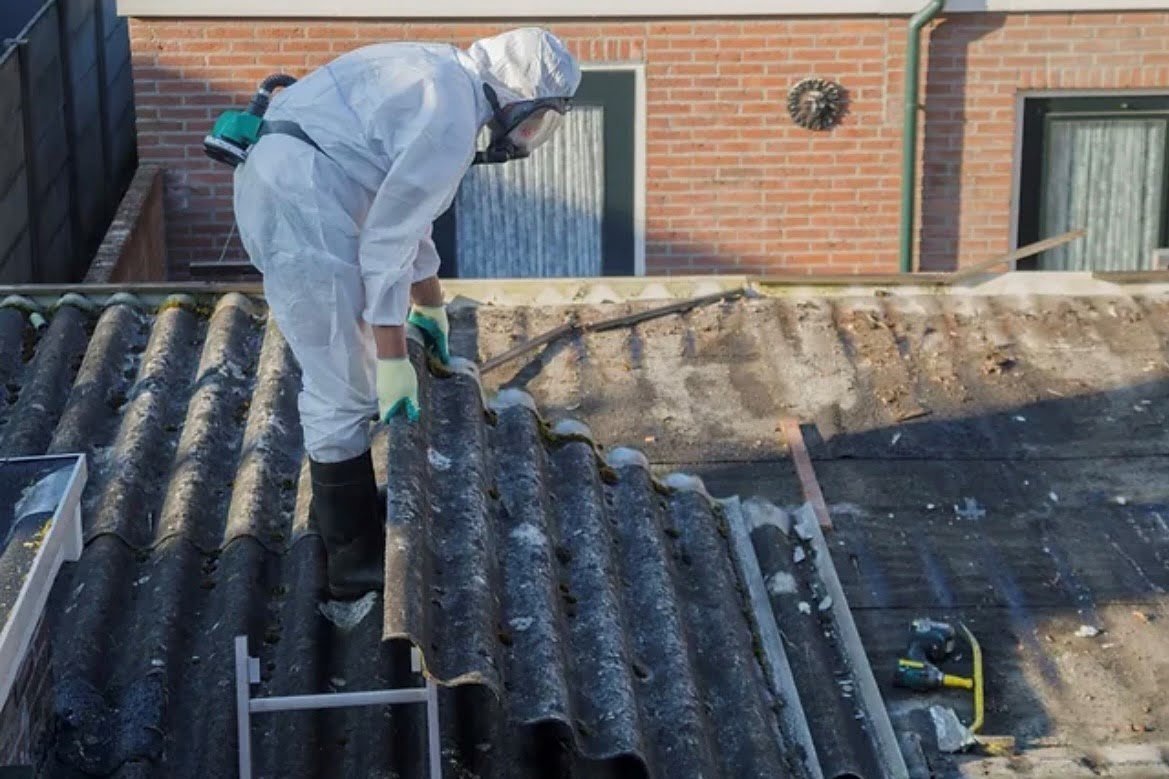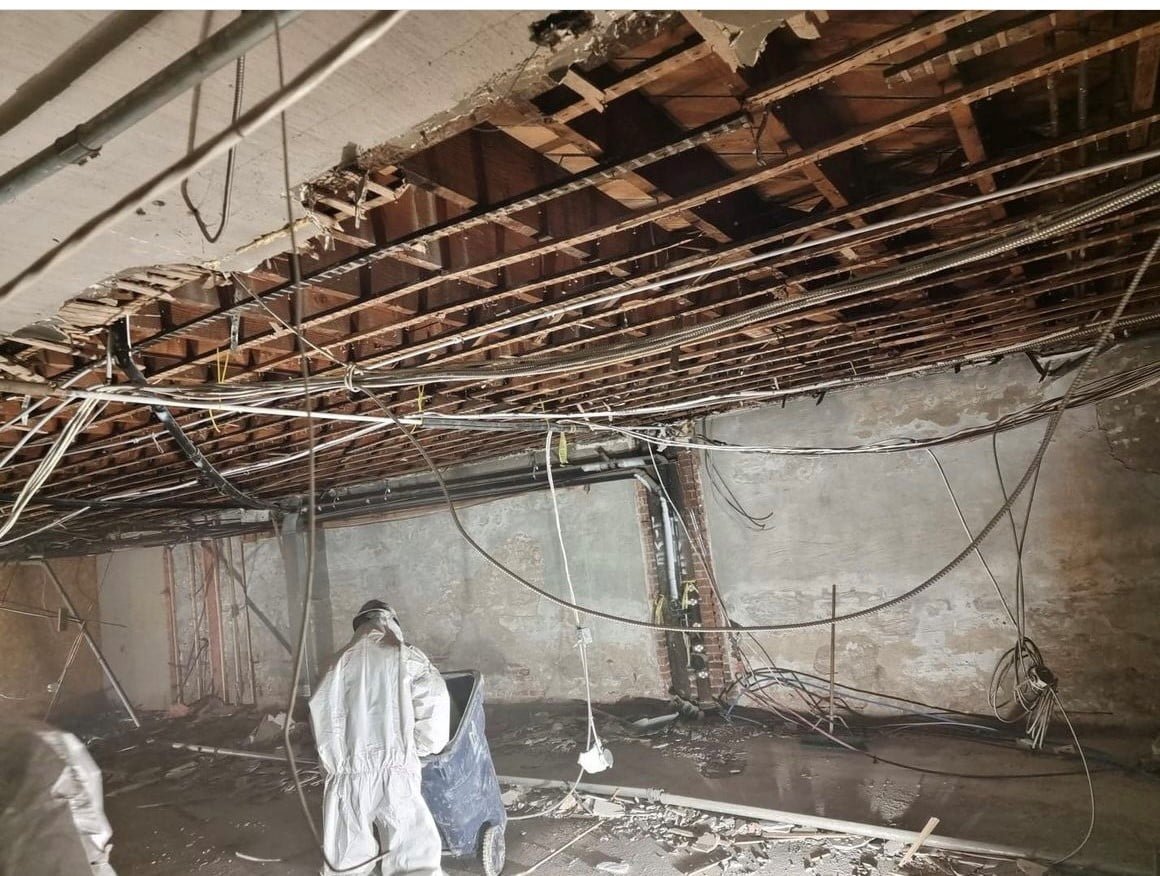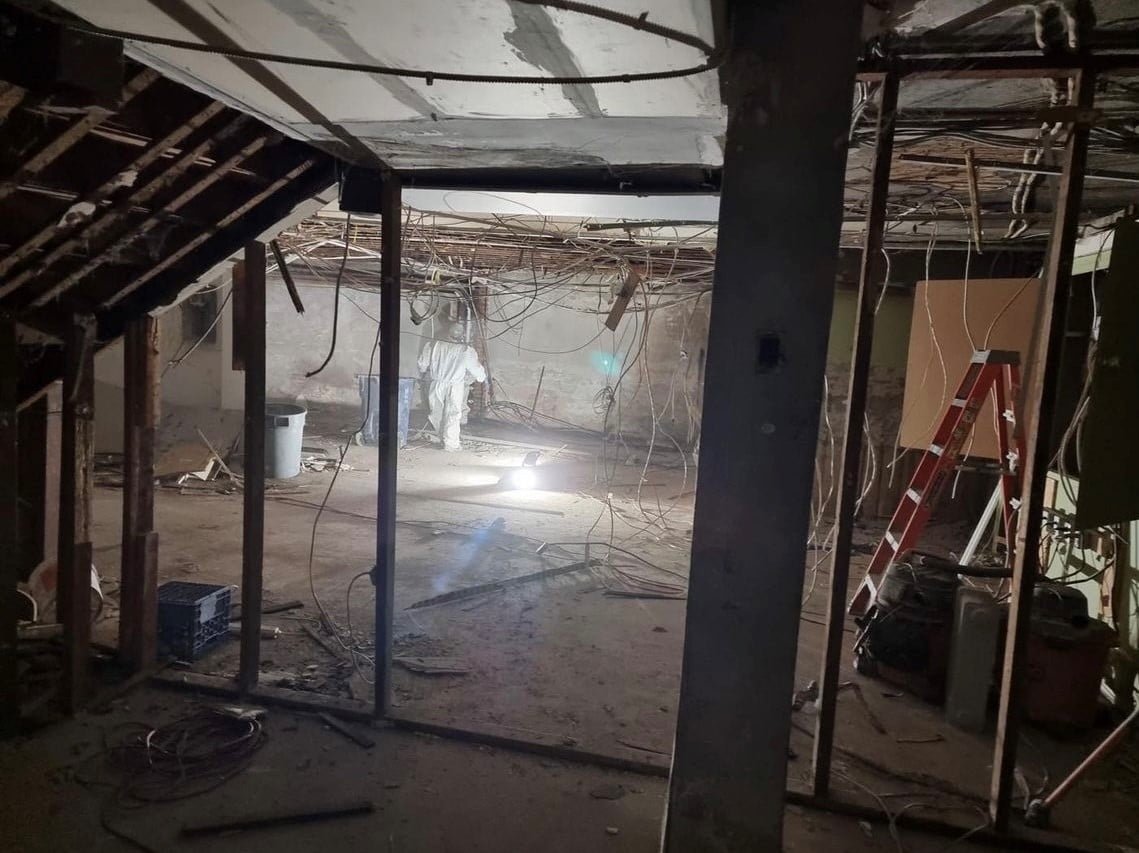Asbestos Removal & Abatement
Discover How Astro Environmental Can Help You With Safe, Efficient, and Professional Demolition
What Is Asbestos Removal & Abatement?
Asbestos removal and abatement refer to the process of identifying, containing, and removing asbestos-containing materials (ACMs) from buildings or other structures. Asbestos is a naturally occurring mineral fiber that was widely used in various construction materials due to its heat resistance and durability. However, prolonged exposure to asbestos fibers can lead to serious health risks, including lung cancer, mesothelioma, and asbestosis. Therefore, it is crucial to remove and safely dispose of any ACMs to ensure the health and safety of occupants.
What Is Asbestos Removal & Abatement Process?
Asbestos removal and abatement involve identifying, containing, and removing asbestos-containing materials (ACMs) from buildings. Prolonged exposure to asbestos can cause serious health risks, so it is important to safely remove and dispose of ACMs. The process includes inspection, developing an abatement plan, containment, removal, cleanup and decontamination, and proper disposal. Certified asbestos professionals should be hired for these projects.

When Is Asbestos Removal and Abatement Necessary?

Heritage-sensitive demolition is necessary when a building or structure holds significant historical, cultural, or architectural value that should be preserved. Situations where heritage-sensitive demolition may be required include unsafe buildings, conservation or redevelopment projects, urban planning and infrastructure development, and irreparable damage from natural disasters. However, it should be considered as a last resort after exploring all other options for preservation or adaptive reuse. Consultation with heritage experts and community stakeholders is important to minimize the loss of cultural or historical significance.
What Are Important Considerations?
Important considerations for heritage-sensitive demolition include understanding the historical significance of the building, familiarizing oneself with heritage regulations, engaging stakeholders, documenting the site before demolition, salvaging and reusing elements, implementing mitigative measures, reinterpreting and commemorating the site, considering sustainable practices, involving public consultation, and conducting post-demolition monitoring. These considerations aim to preserve the historical value and minimize the impact of demolition on the surrounding environment and community.

The Heritage Sensitive Demolition Process
Inspection and assessment
A thorough inspection is conducted to identify all ACMs in the building. Samples may be collected for laboratory analysis to confirm the presence of asbestos.
Developing an abatement plan
Based on the inspection findings, a detailed plan is created to outline the necessary procedures and precautions for the safe removal and disposal of the ACMs.
Containment
The work area is isolated to prevent the spread of asbestos fibers. This may involve sealing off the area with plastic sheets and using negative air pressure systems to ensure no fibers escape into other parts of the building.
Removal
Trained professionals equipped with appropriate personal protective equipment (PPE) carefully remove the ACMs using specialized tools and techniques to minimize fiber release. Wet methods may be used to control dust and fibers during removal.
Cleanup and decontamination
The work area is thoroughly cleaned using HEPA vacuums and wet wiping to remove any remaining asbestos debris. Decontamination procedures are followed to ensure workers and equipment are free from asbestos fibers.
Disposal
The removed ACMs are properly packaged and transported to licensed facilities for safe and legal disposal. Strict regulations are in place to prevent the improper disposal of asbestos waste.
Frequently Asked Questions About Asbestos Removal & Abatement
Why is asbestos dangerous?
Asbestos is dangerous because when its fibers are released into the air and inhaled, they can become lodged in the lungs and other organs. These fibers are extremely durable and do not break down easily, leading to long-term health risks. Over time, the accumulation of asbestos fibers can cause inflammation, scarring, and damage to the tissues, leading to various respiratory diseases. It is important to note that even low levels of asbestos exposure can be harmful, and there is no safe threshold for exposure. Therefore, it is crucial to avoid any activities that may disturb materials containing asbestos, such as demolition or renovation work without proper precautions.
Who should hire professionals for asbestos removal?
Anyone who suspects or knows that their building or structure contains asbestos should hire professionals for asbestos removal and abatement. This includes homeowners, property owners, landlords, businesses, and construction companies. It is crucial to hire trained professionals because asbestos removal requires specialized knowledge, skills, and equipment to ensure the safe and proper handling and disposal of asbestos-containing materials. Attempting to remove asbestos without professional assistance can be extremely dangerous and may result in the release of asbestos fibers, putting individuals at risk of exposure.to asbestos, which can lead to serious health issues such as lung cancer, mesothelioma, and asbestosis.
Professional asbestos removal companies have the expertise and experience to assess the extent of asbestos contamination in a building or structure. They can conduct thorough inspections, sample testing, and risk assessments to determine the presence of asbestos and the level of danger it poses.
Once asbestos is detected, professionals can develop a comprehensive plan for its safe removal and abatement. This involves using proper containment procedures to prevent the spread of asbestos fibers during the removal process. They will also ensure proper disposal of asbestos-containing materials according to local regulations and guidelines.
Professional asbestos removal teams are equipped with specialized tools and protective gear to minimize the risk of exposure to asbestos. They have training on how to handle asbestos safely and are knowledgeable about the proper techniques for removing and disposing of it.
By hiring professionals for asbestos removal and abatement, individuals and organizations can protect themselves, their employees, tenants, and customers from the dangers of asbestos exposure. It also helps ensure compliance with local regulations and prevents potential legal issues that may arise from improper handling or disposal of asbestos-containing materials.
What are the potential health risks associated with asbestos exposure?
Asbestos exposure can lead to a range of serious health risks, including:
1. Mesothelioma: This is a rare and aggressive form of cancer that affects the lining of the lungs, abdomen, or heart. It is almost exclusively caused by asbestos exposure.
2. Lung Cancer: Asbestos exposure increases the risk of developing lung cancer, especially in smokers.
3. Asbestosis: This is a chronic lung disease characterized by scarring of the lung tissue. It can cause shortness of breath, coughing, and permanent lung damage.
4. Pleural Thickening: Asbestos fibers can cause thickening and hardening of the pleura, the lining around the lungs. This can restrict lung function and cause chest pain.
5. Pleural Effusion: Asbestos exposure can lead to the accumulation of fluid in the space between the lung and the chest wall, causing breathing difficulties.
These health risks can take many years to develop, with symptoms often appearing decades after exposure. It is important to minimize exposure to asbestos to prevent these serious health conditions.
Are there any regulations or laws regarding asbestos removal and abatement?
Yes, there are regulations and laws in place in Toronto, Ontario, and Canada regarding asbestos removal and abatement. In Canada, the regulation of asbestos is primarily governed by the Canadian Environmental Protection Act (CEPA) and the Transportation of Dangerous Goods Act (TDGA).
In Ontario, the management and removal of asbestos is regulated by the Occupational Health and Safety Act (OHSA) and its associated regulations, including the Regulation for Asbestos on Construction Projects and in Buildings and Repair Operations. These regulations outline the requirements for asbestos management plans, notification, training, personal protective equipment, and safe work practices during asbestos removal and abatement projects.
In Toronto, the City has its own by-laws and guidelines for asbestos management and removal. The Toronto Municipal Code Chapter 363 - Licensing requires individuals or companies involved in asbestos removal to obtain a license from the City. The City also provides guidelines for the safe handling, removal, and disposal of asbestos-containing materials.
It is important to consult the relevant regulations and guidelines in your specific jurisdiction to ensure compliance with all legal requirements when it comes to asbestos removal and abatement.